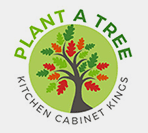Spruce Up Your Kitchen With An Indoor Herb Garden
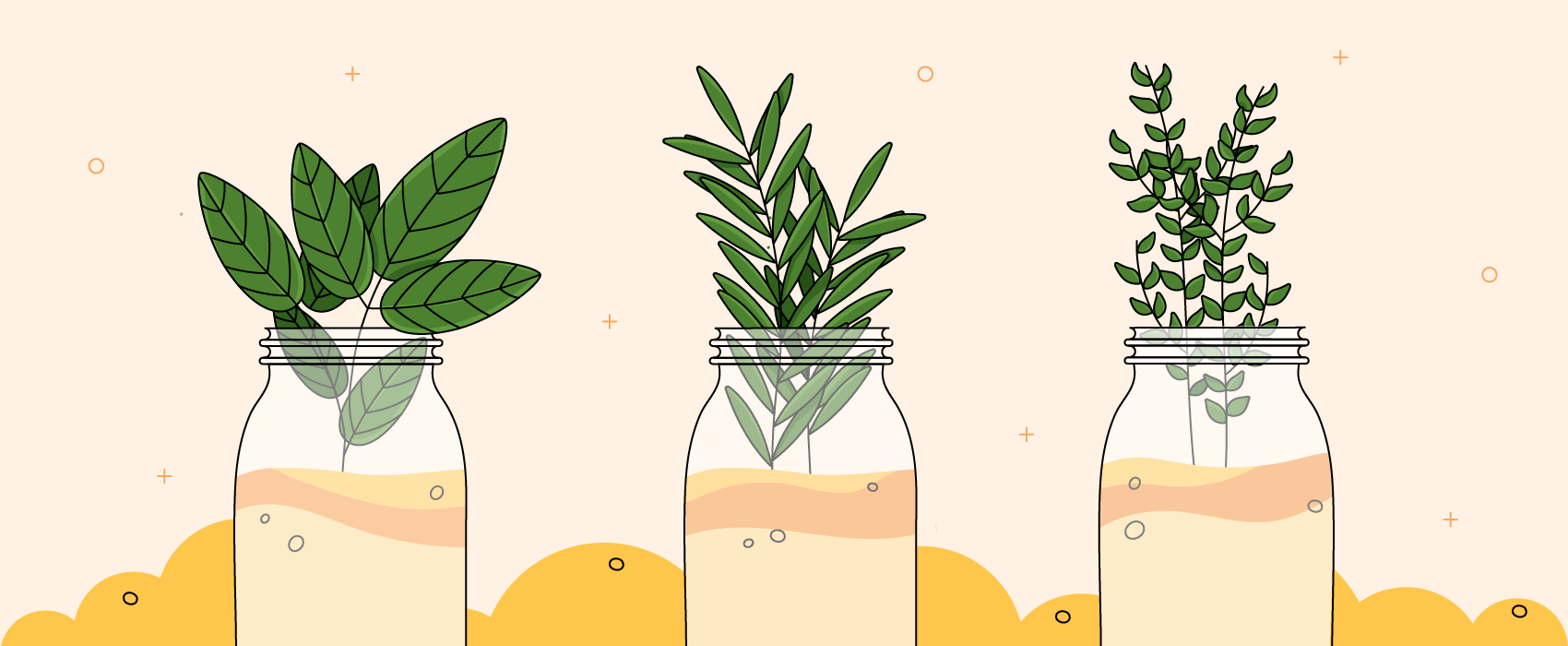
Have you always dreamed of creating an herb garden to give your cooking that fresh and flavorsome kick it needs, but you don't have the outdoor space? An indoor kitchen herb garden is the perfect way to produce that homemade taste you've been longing for.
It may sound daunting, but creating an indoor herb garden requires minimal work after the initial set-up is complete. You can feel accomplished and eat healthier by following a few simple steps. Better yet, you won't have to go to the store the next time you want to spice things up and it'll look great sitting on top of your cabinets.
How To Set Up An Indoor Herb Garden
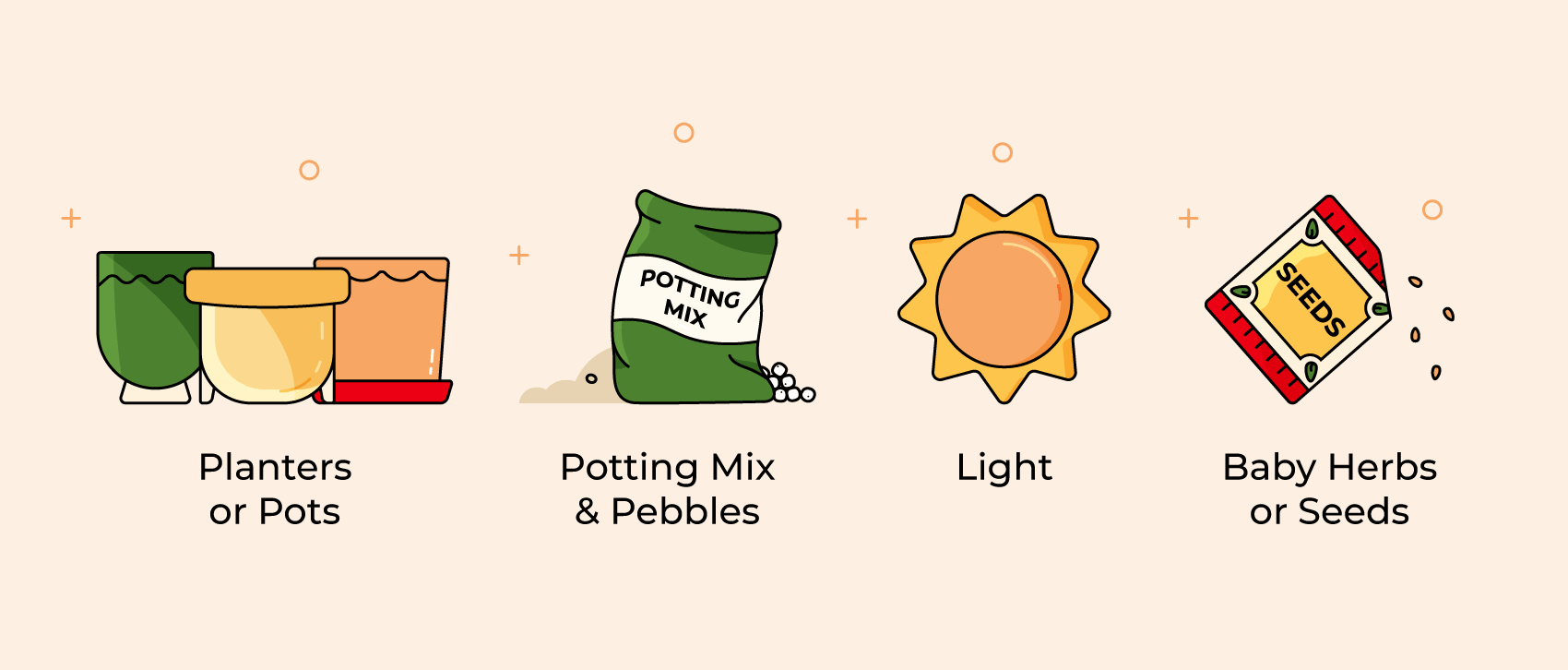
Before you buy a bunch of herbs for your kitchen, you'll want to make sure that you're properly equipped. Here are the basics you'll need to create your own indoor herb garden:
- Pots or planters with saucers: Get creative with the design of your fresh herb garden by using old plastic bottles, terracotta planters, or old mason jars for your planters. You'll just want to make sure you have trays or saucers underneath your planters to catch excess water.
- Potting mix and pebbles: When planting your herbs, you should avoid garden soil. Though it's rich in nutrients, it's too heavy for your potted herbs. Instead, use two parts of organic potting soil, one part perlite as it makes the soil lighter and one part compost so the herbs get the nutrients they need. This mixture will help your herbs to breathe but also retain enough water. Adding small pebbles to the bottom of your pot can further help with airflow and root health.
- Natural or artificial light: Most herbs like it sunny. Before setting up your indoor herb garden, make sure you have a spot that guarantees your plants maximum light exposure, like on a counter below a big window. If your kitchen does not have satisfactory natural light, you can purchase a growing light as a substitute.
- Herbs of your choice: Starting with seeds will take a bit longer for you to see results. If you just can't wait, buy pre-grown herbs at a nursery that shouldn't cost more than three to five dollars each. If you're a beginner, it's best to stick with an herb you use on a regular basis (i.e. basil). In time, you can venture out past your comfort zone, but it will be hard to gauge your success without basic knowledge of the finished product. If you love having an ice-cold mojito on a hot summer day, think about starting with something classic like peppermint. We'll be going through the best herb options for beginners later.
Even if you don't have space for your full-blown dream garden, a kitchen herb garden is a great place to start. Anyone can produce these simple, healthy alternatives to store-bought products in the comfort of their own home.
You don't have to be a pro in the kitchen to master this fun DIY project. Read on to learn about setting up an herb garden in your kitchen in more detail and how to grow fresh, healthy greens that you can add to your favorite recipes.
1. Pick the right pot or planter
Most herbs prefer well-drained soil. When you're choosing a pot or herb planter, make sure it has drainage holes at the bottom to release any unabsorbed water. Failing to do so could result in your herbs getting wet feet — meaning the roots aren't getting enough oxygen because the soil is too saturated with water. The roots will then rot away, ruining all your hard work.
If you already have a container or pot but it's entirely sealed, you can always drill holes into the bottom yourself. Adding pebbles before you fill it with potting mix will prevent the plants from getting wet feet. Because your pots or planters have holes at the bottom, you'll want to invest in saucers or trays to catch excess water and dirt coming out of the bottom of the pot when you water your herbs.
2. Design your personal indoor herb garden

There are many creative ways in which you can display plants in your kitchen. If you don't like the traditional terracotta pot and saucer look, you can also attach your plants to a wall, or hang them from the ceiling by a kitchen window. Hanging your herbs instead of placing them on your kitchen counter or windowsill can save valuable kitchen space. Underneath the pebbles at the bottom of your pot, you can place an old sponge. It will absorb the excess water and prevent it from dripping out of the hanging planters.
3. Try companion planting
While all herbs require specific, individual care to grow, it can be beneficial to group your herbs together. This doesn't necessarily mean that you have to plant them all in the same container, though that works as long as the herbs you're combining prefer the same amount of sunlight and soil conditions. Simply placing your herbs close to each other can benefit plant health, growth, and flavor as the herbs develop a sense of companionship. It will also take up less space in your kitchen. Since they grow well in both sunny and shady spots, these herbs will grow best if placed close to each other:
- Mint
- Parsley
- Cilantro
- Thyme
- Chives
If you want to combine plants in the same container, it's best to co-plant herbs that prefer the same watering conditions. Basil and parsley don't like to have wet feet but require wet soil which is why they work well together. These herbs prefer drier soils and will also thrive in the same container:
- Chives
- Rosemary
- Thyme
Now that we've covered everything you need to consider before setting up your indoor herb garden, let's get into a few herbs that are ideal for beginners!
Pick The Right Herbs For Your Kitchen
When picking herbs to add to your kitchen, you should opt for the ones that reflect your personal taste and cuisine interests. However, they can also be a way of adding some variety to your cooking. The following herbs are perfect for beginners, as they are almost impossible to kill, add an amazing fragrance to your kitchen, and will enhance your recipe repertoire!
Basil
Basil is a staple in Italian cuisine. Its sweet and peppery flavor can spice up salads, pesto, pizza, and even cocktails! A basil plant requires a sunny spot in your kitchen and can grow up to two feet tall in well-drained soil, though it will likely stay a little smaller indoors. Water this herb when the soil is dry to the touch, but make sure that it doesn't get wet feet
Basil is an annual plant, so pruning it every few weeks will keep the leaves large and the flavor at its peak. Pruning is the practice of selectively removing parts of the stem of your plants to help them grow healthier and faster. Pruning your basil is especially important to avoid blooming which can change the taste of the leaves and make them bitter.
When your plant is at least six inches tall, cut every stem that has four or more sets of leaves at an angle just above the fifth set of leaves counting from the top. That way the stem can grow two adjacent stems and leave you with a fuller basil plant.
Tip: Store the pruned basil leaves in a glass of water covered with a loose-fitting plastic bag at room temperature if you're not planning on using them right away. They can last for up to ten days when you refresh the water daily.
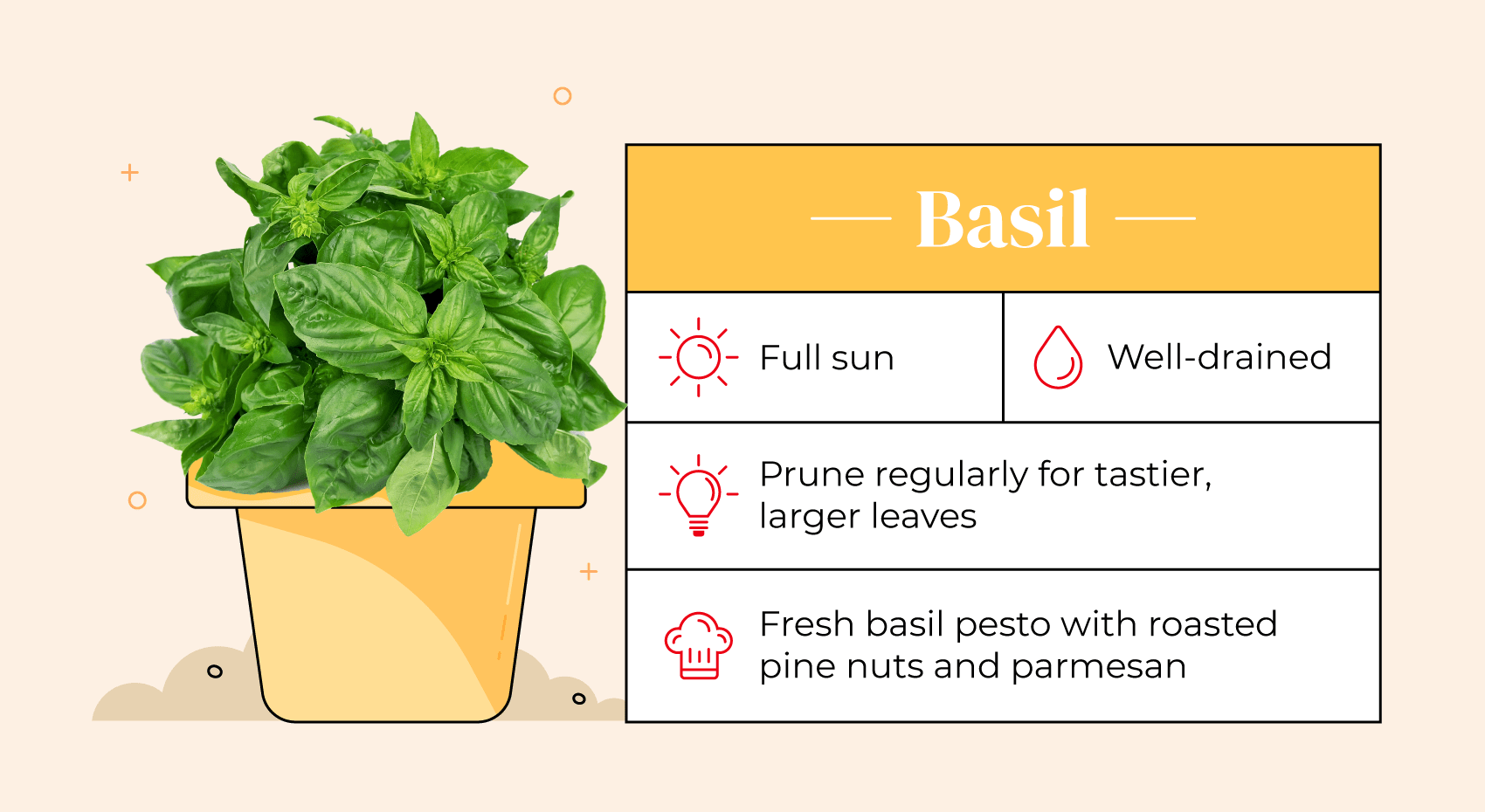
Chives
Chives are a pleasure to grow. They're one of the easiest herbs to maintain and add a zesty onion flavor to stir-fries, soups, or your Sunday morning eggs. Chives grow best in well-drained soil and a sunny spot but also do well in a darker kitchen with less exposure to natural light. They do best in humid environments so placing them between your other herbs or misting them every couple of days is an easy way to promote healthy, juicy chive leaves.
Don't forget to water your chives when the top one inch of the soil is dry. Pour water into the soil until it starts coming out of the pot's drainage holes. When harvesting this herb, leave about two inches of the stem above the soil so it can regrow.
Tip: You can cut chives with scissors instead of a knife. It's quicker and less messy than using a knife and cutting board.
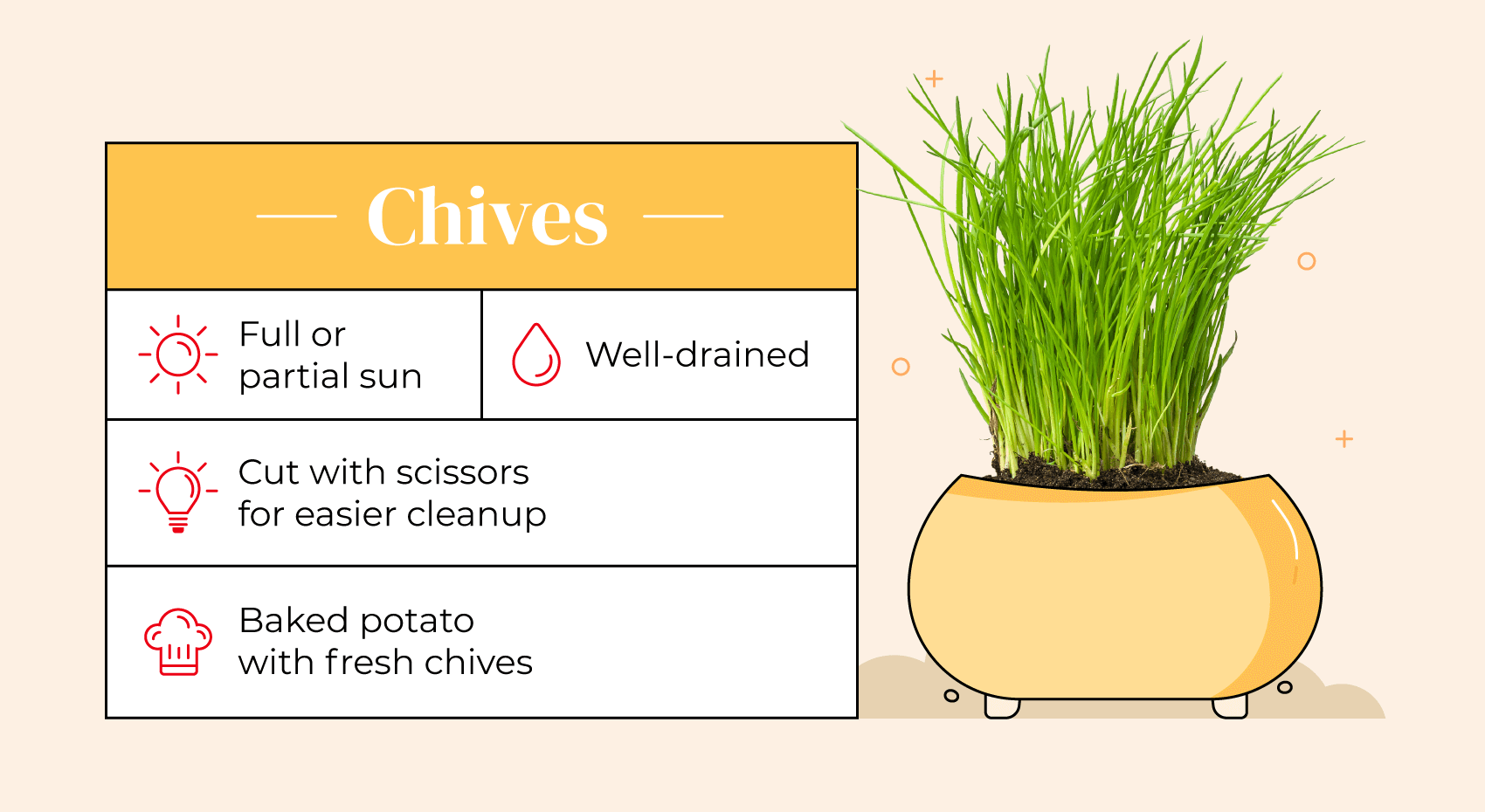
Parsley
Both curly and flat-leaf parsley are a great source of iron and vitamin C. Curly parsley is the perfect garnish to make your meal look fancy, while flat-leaf parsley, also called Italian parsley, is more commonly used in cooking. Parsley will benefit from about five to eight hours of sunlight per day and well-drained soil. Water your parsley plant whenever the first two inches are dry to the touch.
Tip: When harvesting parsley, cut the stems on the outside to encourage plant growth in the center.

Peppermint
Mint doesn't just add a fresh scent to your kitchen space but also elevates the taste of drinks, desserts, and summer salads. The most commonly used mint plant is peppermint. It thrives in full sun but will still grow well in partial shade. Keep the soil of this plant moist for optimal plant growth and health. You can achieve this by watering it every day and never letting more than the first inch of the top of the soil dry out.
Peppermint contains up to 40% of menthol which is the highest amount compared to other mint varieties. Menthol can help relieve headaches, nausea, and sinus congestion which makes peppermint not only a delicious flavor enhancer in your iced tea but a great medicinal plant to have at home.
Tip: Since younger leaves typically hold a richer flavor than mature ones, regular pruning or harvesting will guarantee the highest quality of mint leaves.
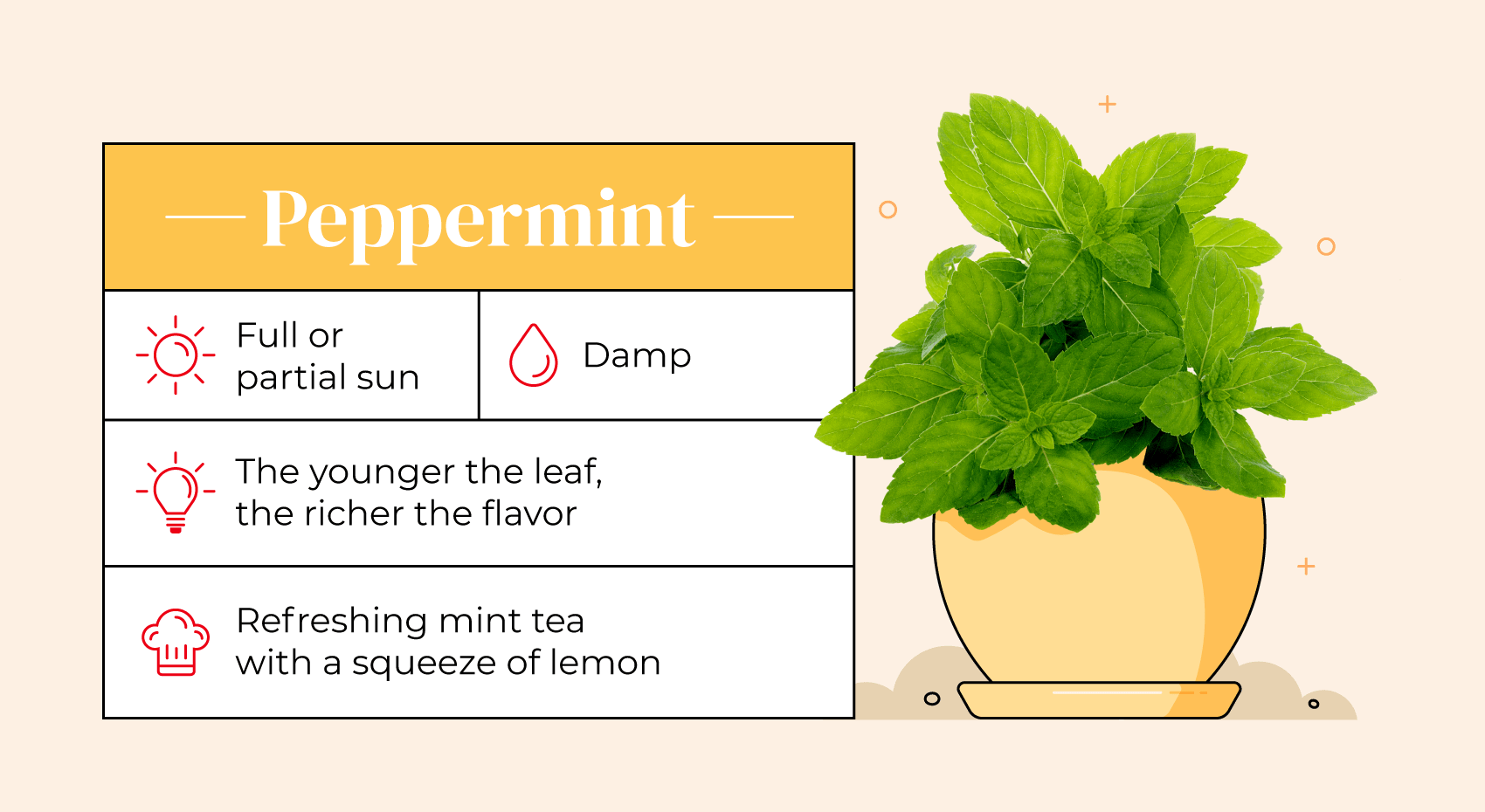
Thyme
Thyme is an aromatic herb with gentle hints of lemon and mint that enhances the flavor of soups, salads, and marinades. This herb doesn't mind a shady spot, as long as it's planted in well-drained soil. The more sun the plant gets though, the more aromatic the leaves. It's best to water thyme completely each time you do but to let the soil dry all the way through before the next watering.
Tip: Relocating your thyme plant to the outdoors in the warmer summer months can promote plant productivity and health.
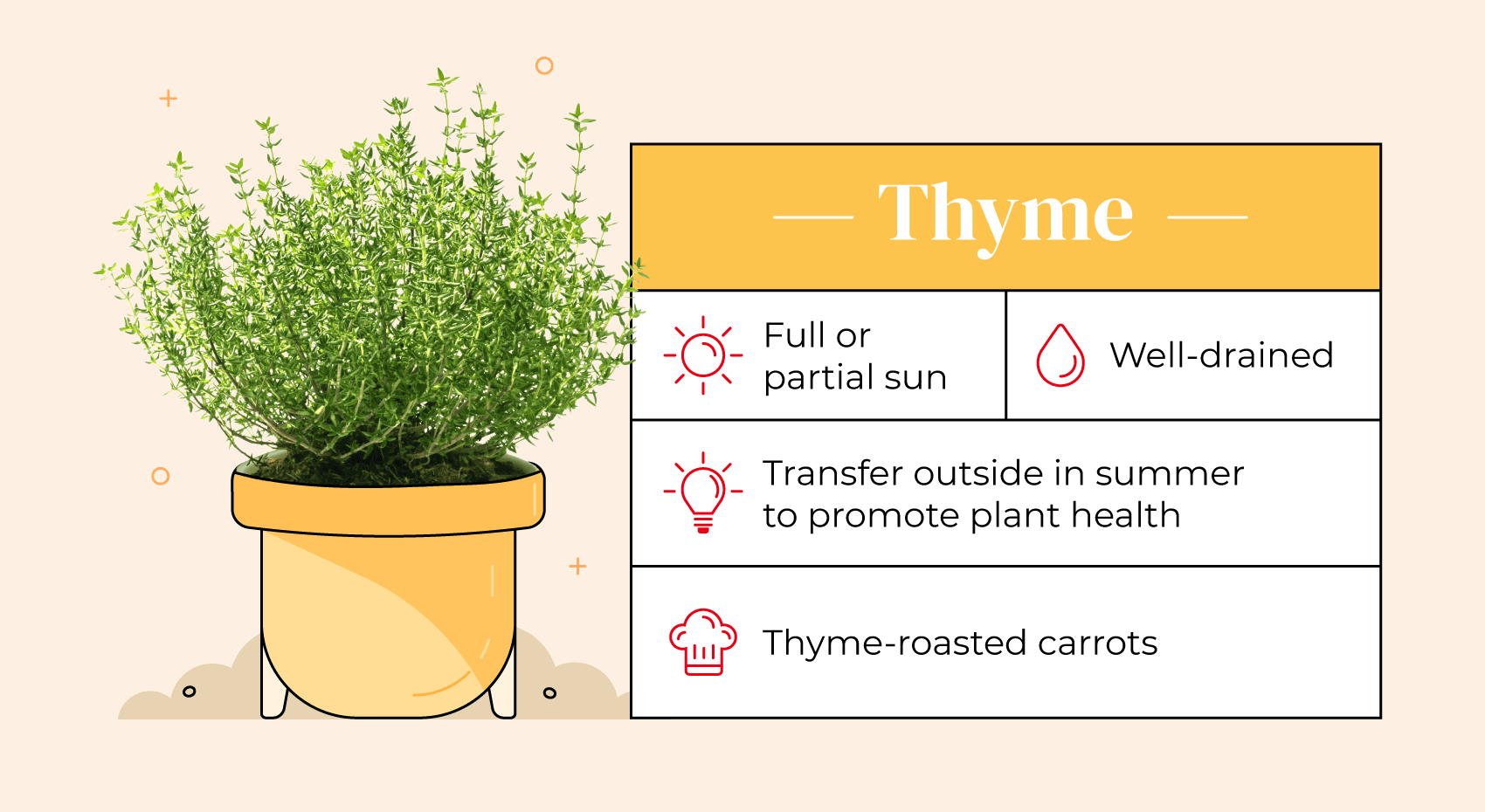
Rosemary
Rosemary loves the sun and is one of the trickier herbs to grow indoors. It's best to place your rosemary by a south-facing window so it can get at least six hours of sunlight every day. If that is not available to you, consider a fluorescent light to provide it with enough light exposure. Allow the top few inches of the soil to dry out before you water your rosemary again but make sure to never let the soil go completely dry as that can damage the herb. The woody rosemary is a delicious addition to marinades, vegetables, or poultry.
Tip: When harvesting or pruning your rosemary plant, bend the stem slightly where you want to make the cut. From there, new stems will sprout and turn your plant into a luscious little tree.
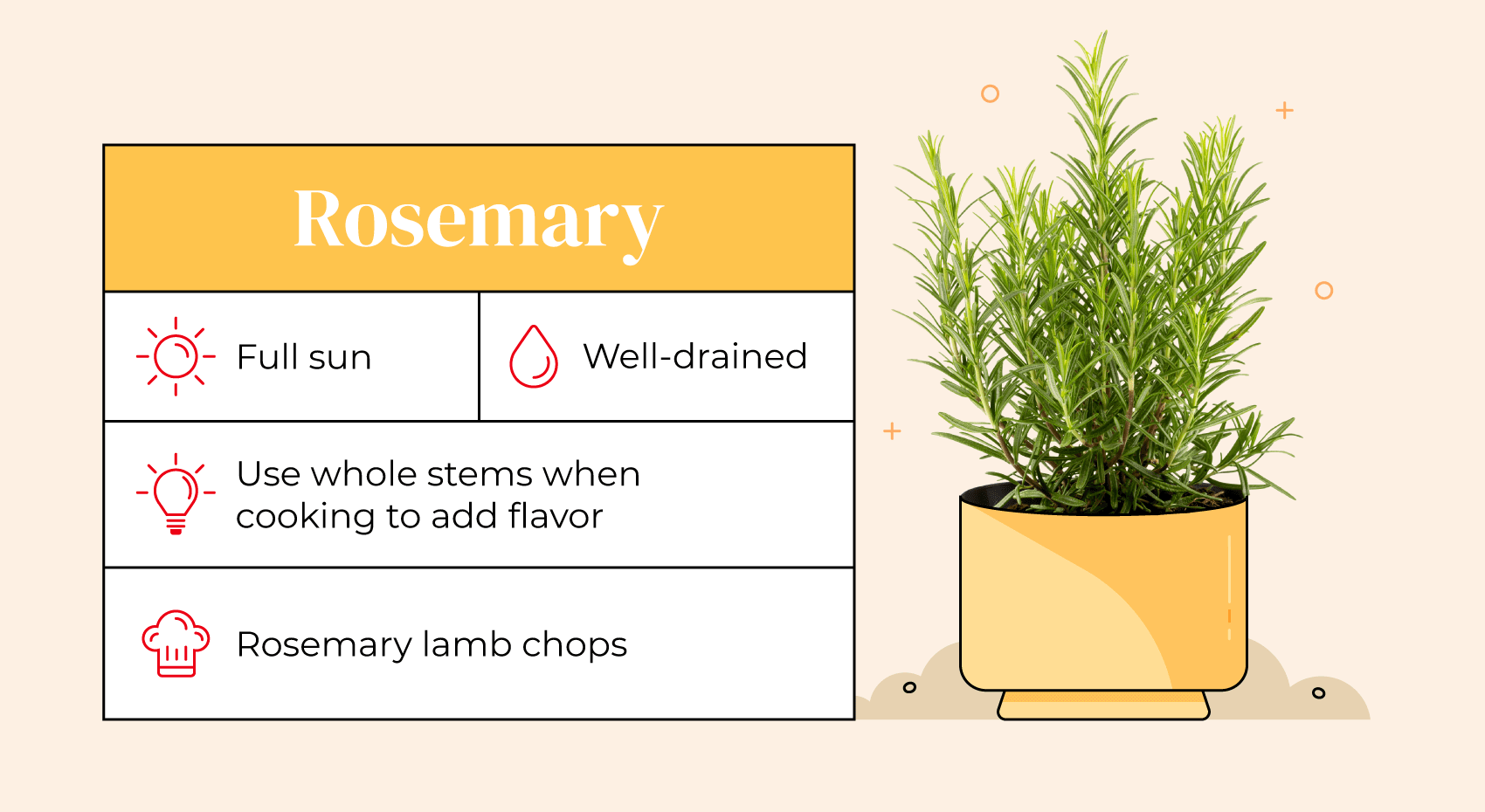
Cilantro
Especially popular in Mexican dishes, the flavorful cilantro is delicious in salsas, salads, and with poultry. This herb does best in indirect sunlight and well-drained soil. Similar to chives, you should let the soil dry out a bit and then water thoroughly until it comes out of the pot's drainage holes. Watering your cilantro thoroughly is much better than watering it frequently.
Wait to harvest it until the stems are at least six inches tall and use them immediately to maximize the flavor of your dish. While it's a good source of antioxidants, some people have a gene that can make cilantro taste soapy to them. If you fall into that category, stick to flat-leaf parsley instead.
Tip: By gently pinching and harvesting the top part of the stem, you will encourage bushier plant growth.

Growing your own herbs indoors is fun, cheap, sustainable, and delicious. Having herbs right at your fingertips that you can use at any given time expands your kitchen skills and inspires creativity when cooking meals. Once you feel comfortable taking care of your edible greens, you can expand your indoor garden with herbs that can be a bit more temperamental like sage or dill or even add some spring onions.
If adding greenery to your kitchen doesn't suffice your craving for a fresh touch, you can further up your kitchen game with new kitchen cabinets! With custom cabinetry, you can make sure to have plenty of room for your little indoor herb garden.






 min
min












